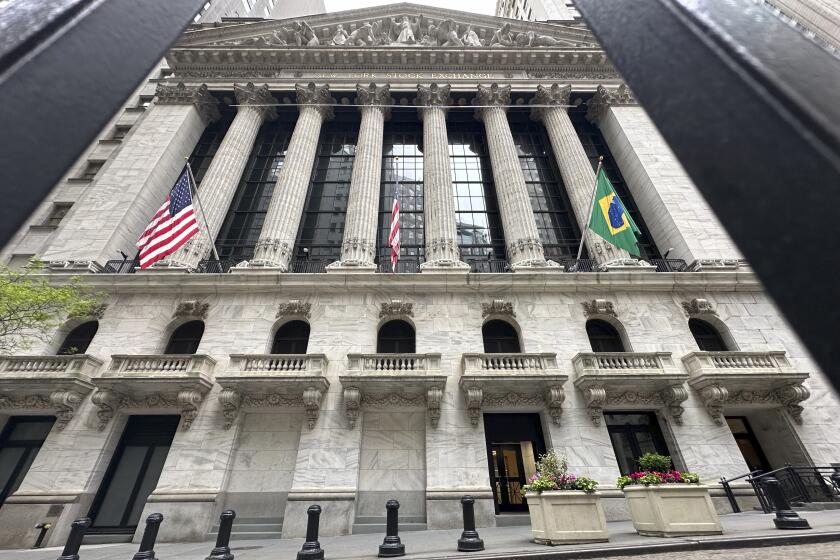The Fallout From Chinese Imports
FURNITURE
Ethan Allen’s chief is stressing personal service in the company’s U.S. stores and plans to open branches in China’s biggest cities.
After watching low-cost Chinese imports devastate much of his U.S. competition, Farooq Kathwari has launched what he calls a reinvention of his company, 70-year-old furniture retailer Ethan Allen Interiors Inc.
Kathwari, 58, chairman and chief executive, is stepping up the personal service in his gallery stores. To reduce costs, he has cut jobs at his three sawmills and 17 U.S. manufacturing plants and is importing more medium-priced furniture from China.
Finding a way to distinguish the Ethan Allen brand will be critical, because so many U.S. retailers now buy their goods from the same Chinese suppliers, said Kathwari, whose privately held firm is based in Danbury, Conn.
“China is going to equalize a lot of people by providing good value for the same price,” he said. “Now you’ve got to decide on what basis you’re going to compete. Price is no longer a competitive advantage.”
In addition to adjusting his strategy in the U.S., Kathwari is preparing to market the American lifestyle to China’s burgeoning middle class. He is teaming up with Markor Co., one of China’s leading furniture manufacturers, to open Ethan Allen stores in China’s biggest cities.
Kathwari, an immigrant from Kashmir, a disputed area between Pakistan and India, has watched China remake itself since he first started visiting that country in the 1970s as a textile importer.
Now, he believes, U.S. businesses will have to do the same as they adjust to China’s rising economic power.
“The natural process of rise and fall of empires always takes place,” he said. “Reinvention is an element to stop that decay. Now, does the U.S. reinvent itself or go the way of great powers?”
*
RETAILING
The head of All American Home Center in Downey has watched China come to dominate entire categories of consumer products.
Greg Fuller has never been to China. But the CEO of All American Home Center can see its influence in his store in Downey.
Striding the bright, well-stocked aisles, he points to the “Made in China” label on small appliances, hardware, patio furniture, coolers, swimming pool supplies and ceiling fans. The veteran retailer has watched China come to dominate entire categories of consumer goods.
It wasn’t always so.
All American was founded in 1959 by the late Irving Gertler, a Eastern European immigrant who so loved his adopted homeland that he gave his store a patriotic name and filled his shelves with American-made products.
A buyer for All American in the 1980s, Fuller recalls a failed attempt to persuade Gertler to stock a bargain-priced Chinese tool set. The handle of a screwdriver nearly came off in the boss’ hand, much to Fuller’s chagrin.
Today, 50% to 70% of the goods on All American’s shelves are imports, many of them made in China by U.S. firms. “The brands, the packaging are so Americanized that most people don’t realize this stuff isn’t made in the United States,” Fuller said. “And most of them don’t care as long as it comes with a warranty.”
Fuller said the rise of giant discounters such as Home Depot and Wal-Mart has reordered the retail universe and lent impetus to the manufacturing boom in China and other developing countries. The big chains, he said, exert powerful pressure on their suppliers to keep prices low. That leads manufacturers to seek the cheapest sources of production, wherever they may be.
Fuller doesn’t spend a lot of time pondering whether that is good or bad. He’s too busy trying to keep All American competitive with the big guys.
“We’re not driving this train,” he said of the family-owned store. “We’re just riding on it.”
*
COLLECTIBLES
Chi Van of Ontario says China’s tax incentives and low-cost labor and land helped him expand his figurine business
Some U.S. companies blame China for stealing their business. Chi Van of Ontario, a maker of figurines and gift items, says China has helped him expand his company.
Born in Vietnam, Van worked in his family’s picture-frame business in Hong Kong before immigrating to the U.S. in the early 1980s. His “eureka” moment came in 1989 at the Orange County Fair, where he saw shoppers snapping up miniature cows, pigs and chickens at a craft stall.
“People just loved them,” Van said. “I was inspired.”
Van opened a factory to manufacture collectibles in Southern California. But success proved more elusive than he expected. He had a hard time finding American workers willing to paint whiskers and eyeballs on ceramic animals all day. Customers loved his products but balked at his prices, which could reach $100 for the largest, most labor-intensive pieces. Van realized he had to cut costs dramatically.
He found an open door in southeast China, where officials offered cheap land, tax breaks, expedited paperwork and a ready supply of low-wage factory hands.
“We just put out a sign and they lined up at the front gate,” Van said. “There must have been 1,000 of them the first day.”
Today, Van Group employs 5,000 workers at four factories in China, and its U.S. sales and distribution staff has grown to 300.
The product line has moved far beyond the barnyard to include collectibles from fairies to firefighters, as well as picture frames, wind chimes, birdhouses and cookie jars. Items range in price from $8 to $300. Van credits a combination of American design and low-cost Chinese manufacturing for his success.
“People can make their homes look beautiful for an affordable price,” he said. “Without China, I don’t know how we could maintain
*
TEXTILES
With the influx of inexpensive, high quality goods from China, U.F.N. Textile’s David Glasberg worries about the future of the U.S. garment trade.
After the Sept. 11 terrorist attacks, textile entrepreneur David Glasberg of Vernon went into the American flag business. Within days, his U.F.N. Textile Group Inc., which specializes in novel styles and speedy production, was cranking out hundreds of thousands of red-white-and-blue banners.
For a couple of months, U.S. retailers snatched them up as fast as Glasberg could make them. Then imported American flags began arriving from China -- more than 100 million of them, according to government trade data.
“They were selling finished products cheaper than I could buy the material,” Glasberg said. “That was the end of that.”
It’s a pattern that has Glasberg worried about the future of the domestic garment trade. U.S. textile and apparel makers have battled imports from around the globe for years. But China has quickly become a source of low-cost, high-quality textile products that are proving irresistible to U.S. buyers -- Glasberg included. He recently began importing Chinese-made sheets and bedspreads.
“Hey, if you can’t beat them, join them,” he said. “I’ve got to make a living.”
Still, Glasberg is saddened by the decline in the local textile industry. His firm, which once employed 60 people, is down to 15. He said the hidden price for those cheap imported goods is U.S. factory jobs. He fears Americans will wake up one day and realize they didn’t get such a bargain after all.
“Even if a shirt only costs $1, how are you going to buy it if you don’t have a job?”






